Many people who struggle with a mental, emotional, or physical health challenge have found that a well-trained service dog makes daily life much easier to navigate.
Service dogs can help their owners in a variety of ways, ranging from monitoring their owner’s blood sugar levels to helping their owner walk!
Just about any dog can be trained to perform service work, but some breeds are especially likely to excel in such capacities.
Below, we’ll talk about some of the breeds that are best suited for service work and examine some of the traits that make some breeds stand out in these contexts more than others.
10 Best Service Dog Breeds
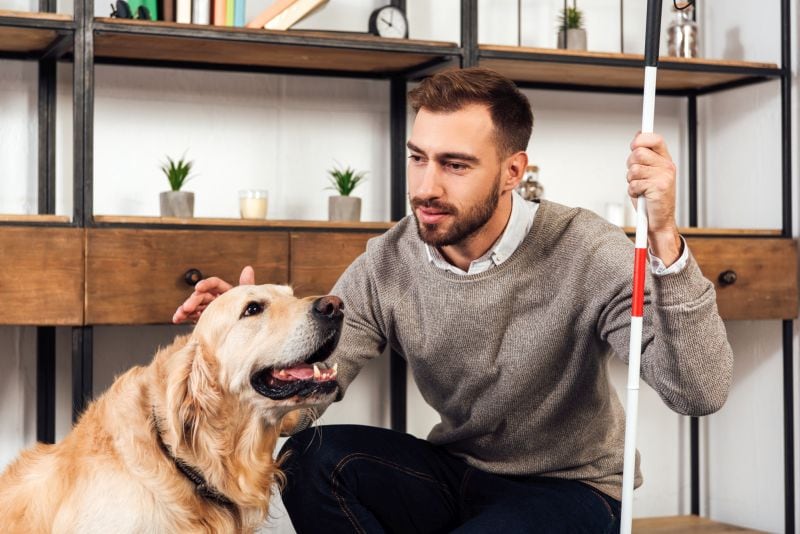
It’s important to select a service dog that suits your specific needs, but the following ten breeds are some of the most popular choices by those who need a four-footed assistant!
1. Labrador Retriever
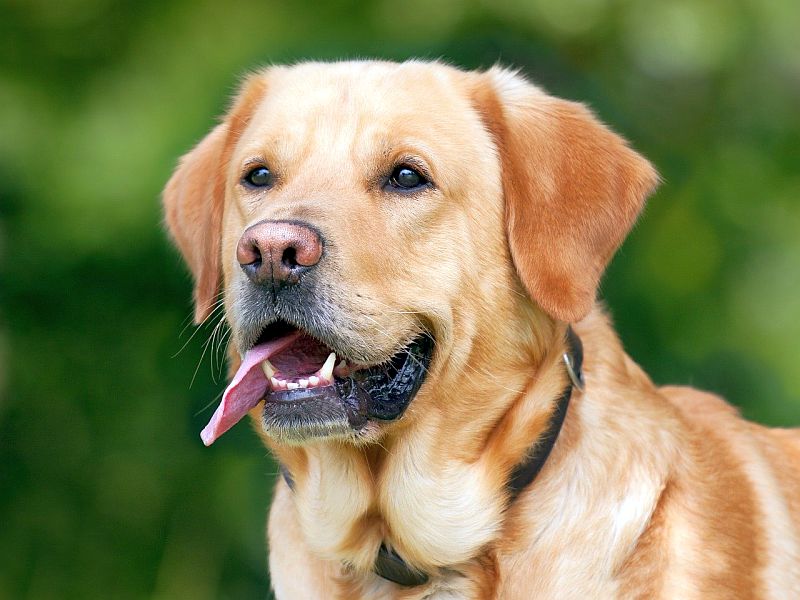
Labrador retrievers are one of the most popular pet breeds, and they make fantastic service dogs too.
Most Labrador retrievers are ridiculously friendly and good-natured. They also tend to bond very strongly with their owners and often love having a job to do. Large individuals may even be able to help you stand or walk.
Labs can perform a variety of services for their owners, but they’re especially helpful for mobility-impaired owners who need help grabbing or manipulating items. This is partly due to their natural retrieving instinct, but Labrador retrievers also have a “soft mouth,” which means they grip things lightly with their teeth. This will help ensure they don’t mangle the objects you expect them to fetch.
2. Golden Retriever
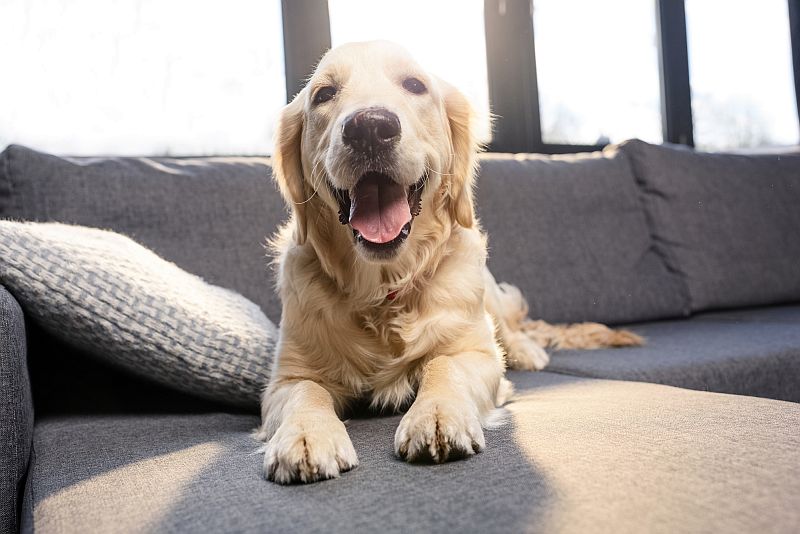
Given their similarity to Labs, it shouldn’t be surprising that golden retrievers also make excellent service dogs for people. They’re smart, friendly, and easy to train, and most enjoy having a job to do.
Additionally, the form strong bonds with their people, and despite being pretty big dogs, goldens look gentle and sweet, which can help put other people (who may be afraid of dogs) at ease.
Goldens are ideal for emotional support work, making them one of the best service dogs for PTSD and a great breed for reducing anxiety. But they can also handle more physical work, such as guiding blind owners or fetching items for those confined to wheelchairs.
Do note that goldens shed quite a bit, so you’ll need to decide whether or not you can deal with this issue before selecting one of these lovable canines.
3. German Shepherd
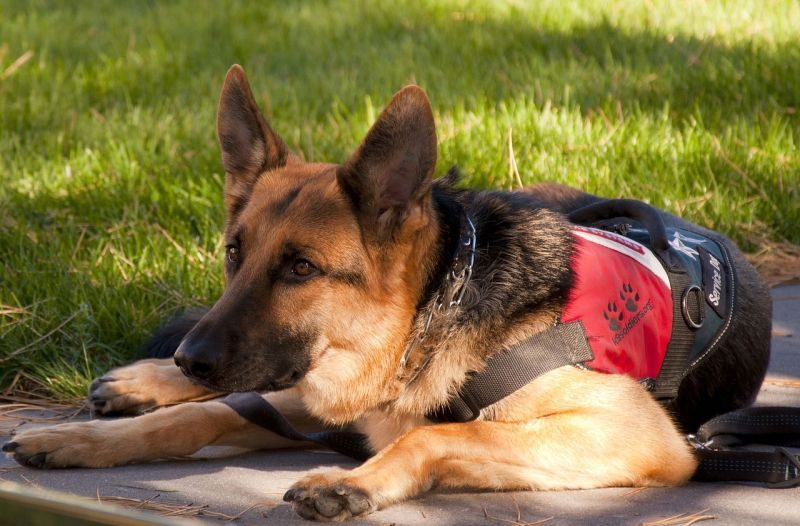
German shepherds are most commonly associated with guard and protection work, and they’re also frequently used as police dogs. But they also have the character traits to be good service dogs too.
German shepherds have all of the things you’d want when picking a service dog breed, as they’re intelligent, well-behaved, and easy to train. They usually bond very strongly with their owners too.
German shepherds were likely among the first dogs to be used as service animals, and they can do it all.
Many have enough size and strength to help mobility-impaired owners get around, they are attentive enough to notice when their person is feeling anxious, and this breed boasts a powerful sense of smell, which makes them well-suited for monitoring blood sugar levels.
4. Poodle
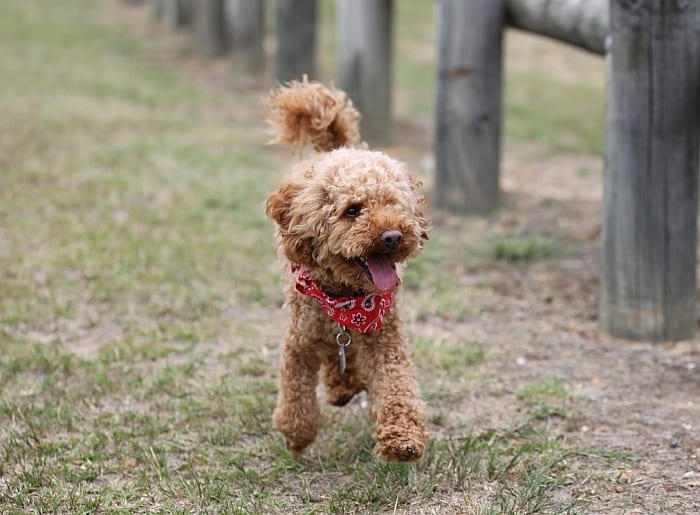
Many people think of poodles as prissy dogs with fancy haircuts, but they’re actually very smart and capable dogs who often love having a job (and for the record, you can give your poodle a pretty normal-looking haircut if you like).
Poodles have a great demeanor for service work and they’re very easy to train. Plus, they look great in a service vest!
Most people who plan to use a poodle for service work should probably select a standard poodle (poodles come in several different sizes – standard poodles are the largest), as they’re bigger and stronger than toy or miniature poodles.
However, if you don’t need your service dog to perform exceptionally physical work, smaller varieties may be easier to take with you into crowded locations.
5. Boxer
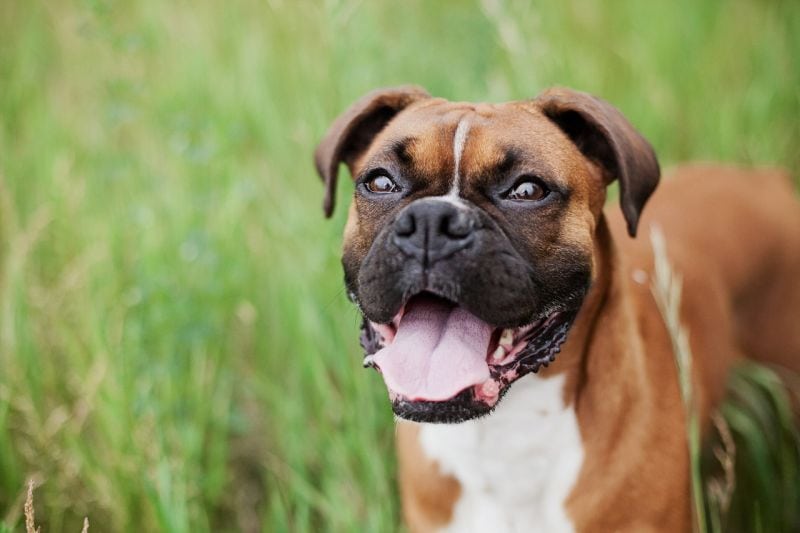
Boxers aren’t often used for service dog work, but they certainly exhibit most of the traits that you want in a service dog. They are big enough to perform physical tasks, but they’re still small enough to comfortably navigate crowded locations.
Boxers are exceedingly good-natured dogs who are not only friendly with adults, they’re marvelous with children too. They do have high energy levels, like Labs and golden retrievers, so you’ll need to provide them with plenty of time to exercise.
That said, they can actually adapt quite well to apartments and small homes.
6. Great Dane
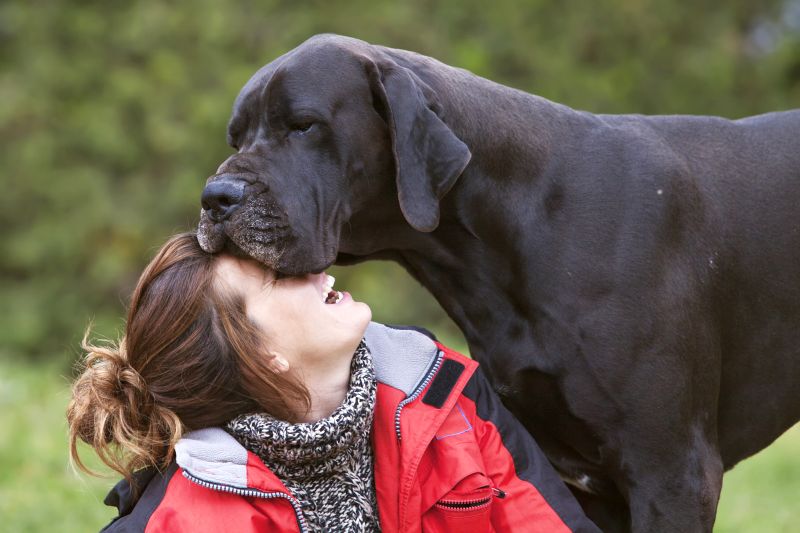
Great Danes are uniquely well-suited for some service tasks, given their immense size and strength. They’re often great mobility assistance dogs, meaning that they’re helpful for owners who need help standing or keeping their balance. But they are also great service animals for people who need emotional support, given their calm and reassuring demeanor.
Great Danes are typically pretty friendly with strangers, but those who’ve been trained for service work will remain focused on their person at all times. Great Danes do drool quite a bit, so they aren’t ideal for all owners.
You needn’t take my word for any of this – look at how well this Great Dane is helping his special little person.
7. Border Collie
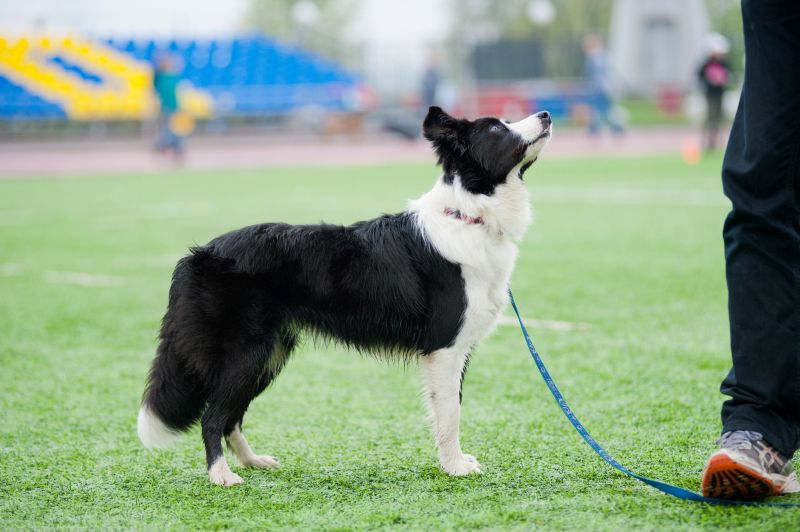
Border collies are often considered the smartest breed in the world, so it shouldn’t be surprising that they make excellent service dogs (note that many of the other brainy breeds, including Labs, poodles, and German shepherds are also on this list). They’re also remarkably easy to train, and most love having a job to do.
Border collies are pretty good with kids, but they will occasionally “herd” children, which can lead them to accidentally knock toddlers over, so they may not be the best choice for those who are frequently around unfamiliar kids.
Border collies are a high-energy breed, and they can be mischievous if under stimulated, so you’ll want to be sure you can provide plenty of opportunities to exercise and brain-stimulating interactive toys before adding one to your home.
8. Pomeranian
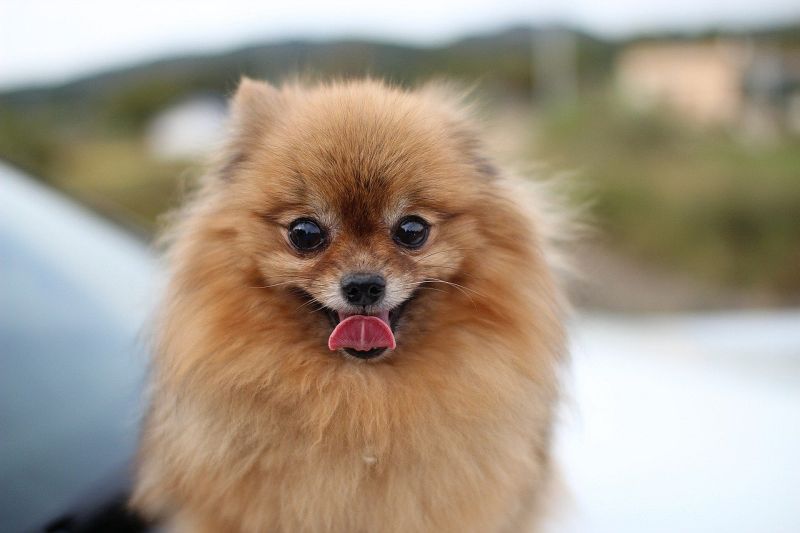
Most service dogs are on the large side, but the Pomeranian is a small breed that is often quite capable of helping in service-related capacities.
A Pomeranian isn’t going to help you keep your balance or walk, but he can learn to perform a number of tasks that don’t require a ton of size or muscle. They’re very attentive to their owners, and most will enjoy having a job to do.
The Pomeranian is probably the best choice for owners who need the help of a service dog but don’t have a lifestyle that is suitable for big breeds.
Given their small size, it is easy to carry a Pomeranian with you in a small pouch or backpack, and they are so cute that they’ll rarely frighten anyone when you are in public!
9. Bernese Mountain Dogs
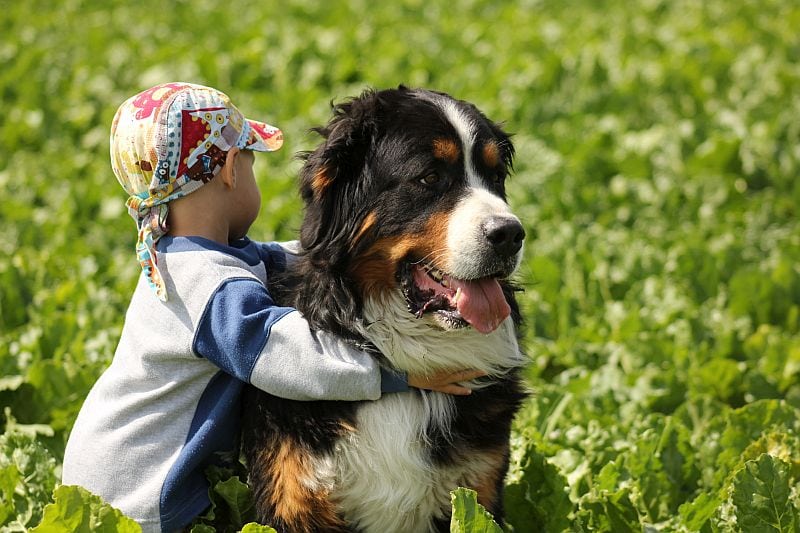
Bernese mountain dogs exhibit many of the most important traits to look for in a service dog, including a friendly disposition, impressive intelligence, and a strong work ethic. They’re also big and strong enough to perform some physical tasks, and they’re smart enough to learn how to perform complex jobs to help their people.
Additionally, the Bernese mountain dog is generally an easy doggo to care for, making him pretty good for first-time owners. He’ll still need proper training, but he’s naturally one of the best types of service dogs around.
Bernese Mountain dogs aren’t ideal for warm climates, and they do shed quite a bit, so you’ll want to be sure these things won’t be a problem before adding one to your home. They also require plenty of time to run, jump, and play, so they aren’t well-suited for apartment life.
10. Pit Bulls
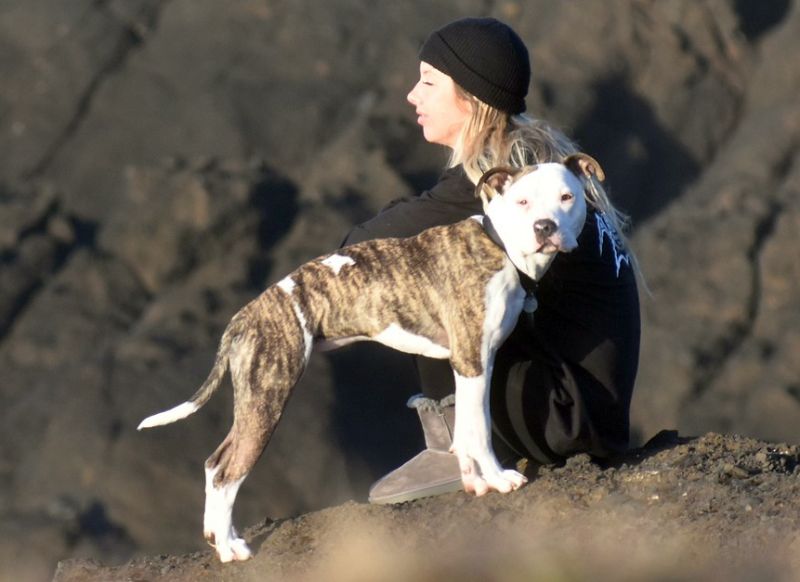
Pit bulls (and their American Staffordshire terrier cousins) often make excellent service dogs for people, although you’ll have to be prepared to deal with the negative (though mistaken) perception of the breed.
Many people fear pit bulls, but these fears are the result of ignorance and sensationalistic coverage by the media – in truth, the vast majority of pits are loving, gentle dogs.
In fact, pit bulls are one of the friendliest breeds around, and well-trained individuals are generally very well-behaved in public situations. They’re also pretty smart and easy to train, and most pit bulls have a strong work drive.
11. A Mixed Breed Dog
The truth is that — while not all individual dogs make good service animals, any dog has the potential to be a great service dog, so long as they are even-tempered, calm, and have a strong work drive.
Mixed breed dogs can make absolutely fantastic service dogs, so long as they have a compatible disposition. This means that you may be able to find your next service dog at your local rescue!
For example, meet Velvet over here!
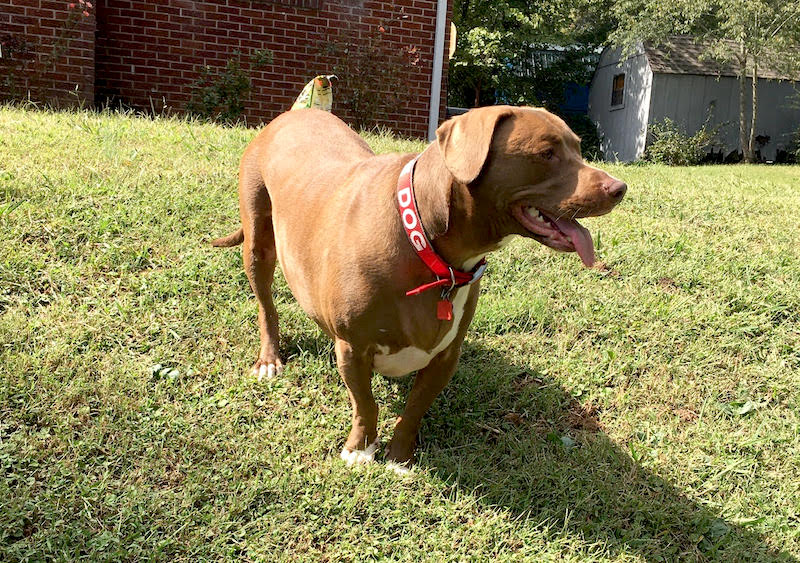
Velvet is a Bassett and Australian lab mix who helps out her owner Kate with PTSD and other ailments.
Velvet knows ASL, is a regular hospital visitor, and quickly picked up a variety of service commands, such as “brace”, in which Velvet helps her owner get into her wheelchair and a “get out” cue which has Velvet help her mom quickly get out of crowded areas.
Velvet was adopted by her owner and was not bred specifically to be a service dog. Despite being a mixed breed rescue, she has performed exceptionally at being a service dog for her owner! Thanks Kate, for contacting K9 of Mine and sharing your story with Velvet.
The Different Types of Service Dogs
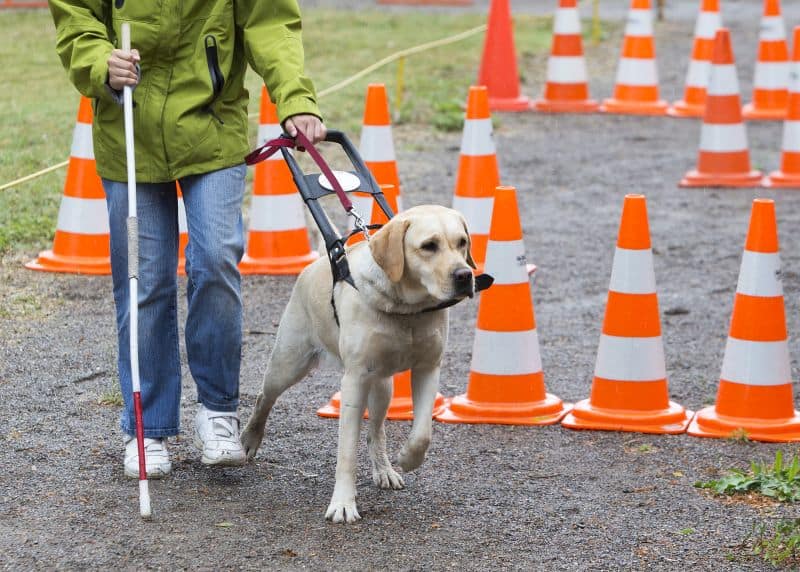
Although the terms therapy dog, service dog, and emotional support dog are often used interchangeably, they do refer to different things. We’ve written about how to identify a service dog extensively and shared the facts about therapy dogs before, but we’ll provide a quick synopsis below.
→ Therapy Dogs
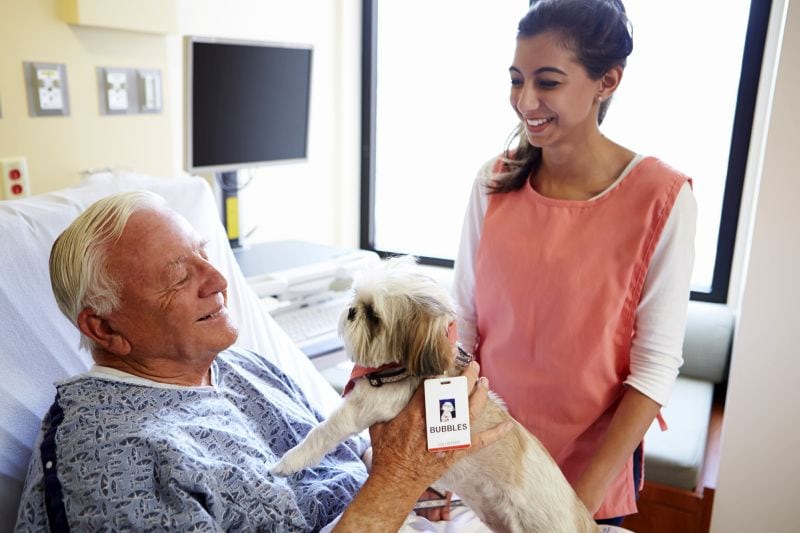
Therapy dogs are used to help reduce anxiety and fear in people who are typically coping with some type of trauma. This includes people who are dealing with relatively minor traumatic experiences or life-altering events.
For example, some therapy dogs work in airports where they allow weary or nervous travelers to spend a few minutes petting them. Others visit hospitals to help cheer up patients and frightened visitors who often have a lot on their minds.
Note that therapy dogs are usually not expected to help their owners feel better – they are primarily tasked with helping cheer up other people.
→ Emotional Support Dogs
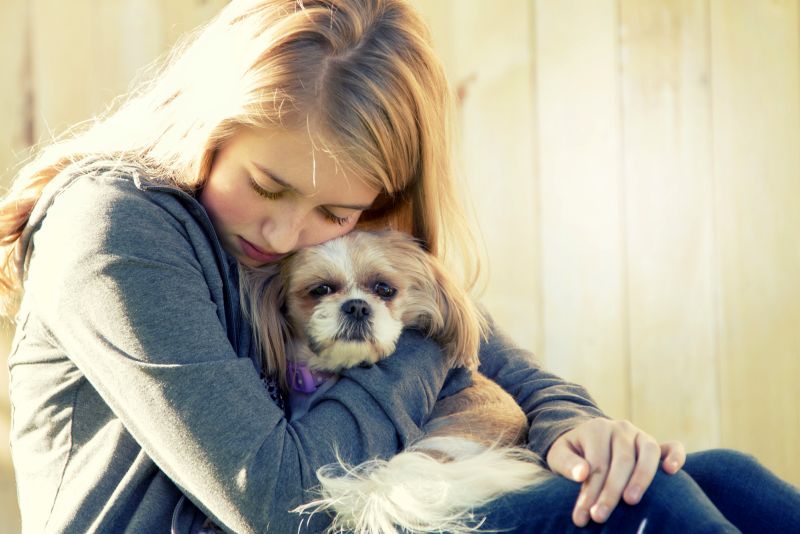
Emotional support dogs are usually expected to help their owners cope with fear, anxiety, post-traumatic stress disorder, depression, or other emotional challenges.
Some do so by simply hanging out with their person, soliciting scritches, and generally being a dog, while others will intervene during acute attacks of anxiety or fear.
For example, if the owner of an emotional support dog starts showing signs of an impending anxiety attack, the dog may jump up on his person’s lap and start doling out kisses and affection. This is often helpful for stopping the attack and allowing their owner to relax and feel safe.
Dogs don’t actually need to have any kind of specific training or experience to qualify them as emotional support animals. That being said, there are certainly sets of skills we’d recommend for training an emotional support dog.
There are ways to officially register your dog as an emotional support animal, which can (in some cases) provide added protection against landlords who don’t traditionally allow pets, and may allow you to access certain spaces with your dog where normal pets cannot go.
However, rules vary between businesses, and service dogs are the only animals allowed full access to various businesses and public spaces.
→ Service Dogs
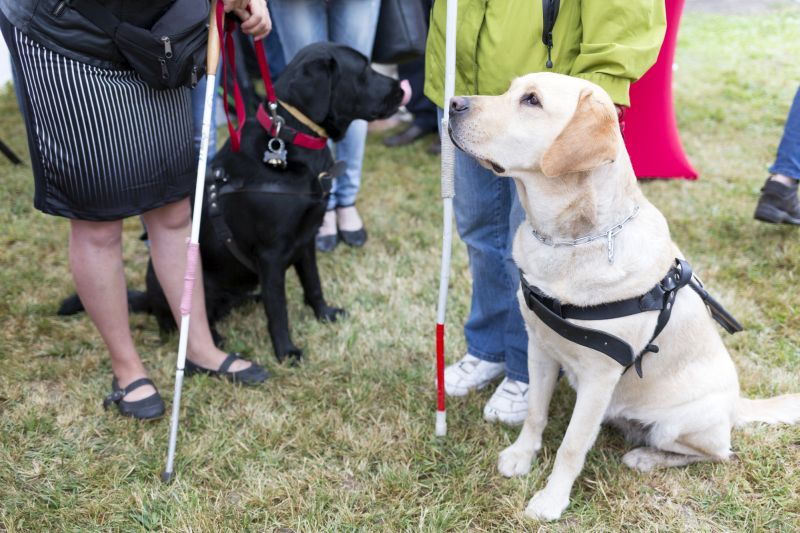
Service dogs are quite different from therapy dogs and emotional support animals. Unlike these other dogs, which primarily provide value by just being lovable floofs, service dogs are trained to perform specific and essential tasks for people with a disability.
The classic example of a service dog is a German shepherd leading a blind owner around, but there are a variety of other tasks service dogs have been trained to complete.
Some help wheelchair-bound owners open doors, while others are trained to notify deaf owners of ringing doorbells, fire alarms, and other important sounds.
There is occasionally a bit of crossover between the various categories.
For instance, a dog that is trained to take active, well-defined steps to help stop their owner’s anxiety attacks (as in the earlier example) is probably better characterized as a service dog for anxiety rather than an emotional support dog because he’s performing a specific task.
Some dogs are trained to monitor autistic people and even sit at their feet during meltdowns to help calm them.
The exact way your four-legged assistant is classified will affect the logistics of having him accompany you in your daily activities (for example, service dogs are allowed nearly everywhere, but therapy dogs are restricted from some places).
However, it won’t matter to you or him – you’ll just know that you make each other’s lives better.
Traits of Good Service Dogs
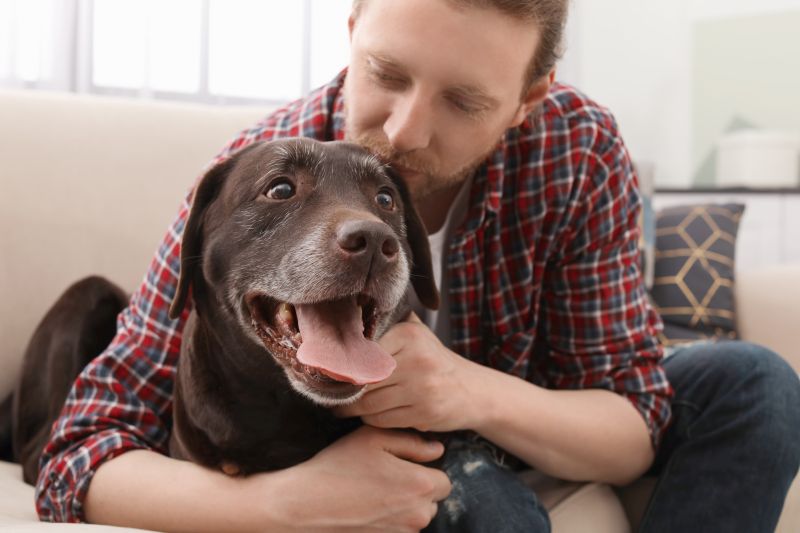
Although good service dogs come in all shapes, sizes, and breeds, most of the best exhibit a few common traits. This includes:
Intelligence
Pet dogs needn’t be especially smart – it doesn’t take a lot of intelligence to follow you around, shower you with love, and randomly do cute stuff.
But service dogs must often perform complex tasks, which require considerable intelligence to pull off. So, most of the best service dogs are smart cookies.
Friendly Disposition
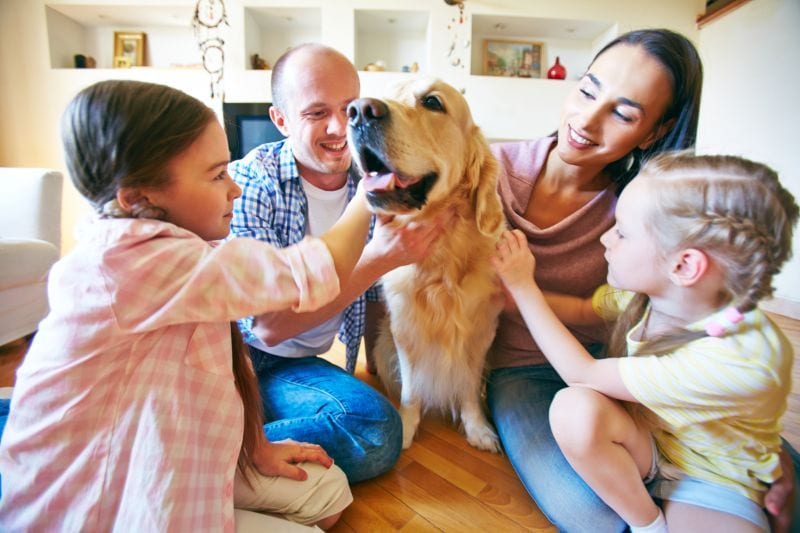
Because your service dog will frequently be required to work in public settings, they need to be comfortable around and friendly with other people and pets.
Dogs who are aloof or overprotective may make good pets or guard dogs, but they rarely make good service, therapy, or emotional support dogs.
Calm Demeanor
Service and support dogs must be relatively calm to ensure they don’t cause disturbances when you are in public. And this not only means avoiding dogs who tend to run, jump, and play during inappropriate times, it also means avoiding dogs who are reactive or easily startled.
Tidiness
For the sake of social harmony, you’ll want to make sure that your service dog doesn’t drool and shed everywhere you go. This will just lead to unnecessary conflict and strife, which may cause some to resent service and support dogs.
Strong Work Drive
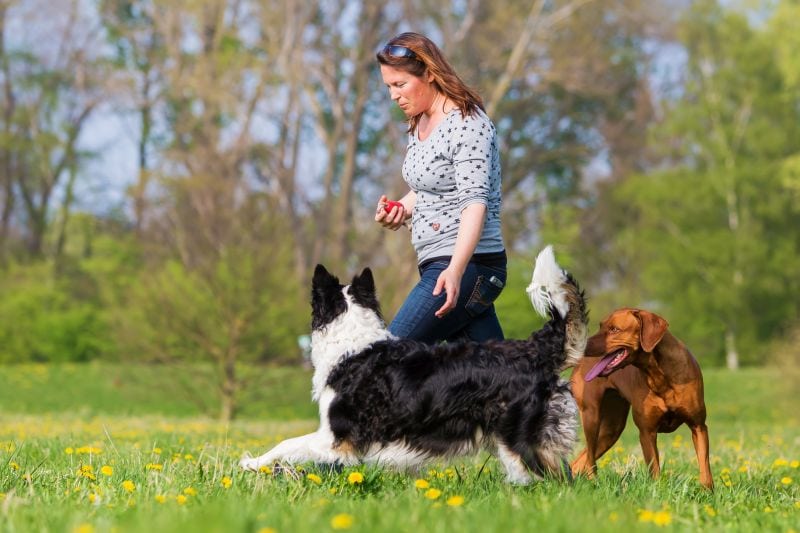
Some dogs have a strong desire to work with their owner, while others are happy to lounge on the couch all day and have their stomach scratched.
If you are in need of an emotional support dog, you may be able to get by with one in the latter category, but a strong work drive is an important trait to seek when picking a service dog.
Tendency to Bond Strongly
Although independent dog breeds can be wonderful in some circumstances, most good service and support dogs tend to be touchy-feely dogs who bond strongly with their owners. Besides, you are going to end up depending on your dog pretty heavily, so it’ll just work better if you pick one that’ll develop a strong bond with you.
While the ten breeds discussed above are some of the most common service dog breeds, there are plenty of exceptions and you should always try to find a dog who’s well-suited to provide the kind of service you need.
For example, Jack Russell terriers aren’t one of the most common breeds for service dog work, given their penchant for mischief and independent nature, but I saw an elderly lady at the DMV a few weeks ago who was accompanied by a darling little Jack Russell in a service dog jacket.
I didn’t want to impose, so I didn’t ask her what service her dog performed, but whatever his duties entailed, he carried himself with a sense of purpose and appeared very observant of his mom. Unlike many other Jack Russells, who tend to be perpetually scanning the surroundings for potential adventure, this little fella kept his eyes locked on mom the entire time.
So, while you should certainly consider the breeds we listed above, don’t hesitate to stray from the list!
Do you have a service animal or support dog? Tell us all about him! Also, be sure to mention the service dog organization who helped match you with him, if you worked with one.
You don’t have to share any details you don’t want to, but we’d love to know the services your dog provides, the breed he belongs to, and whether or not you feel like he’s helped improve your quality of life.
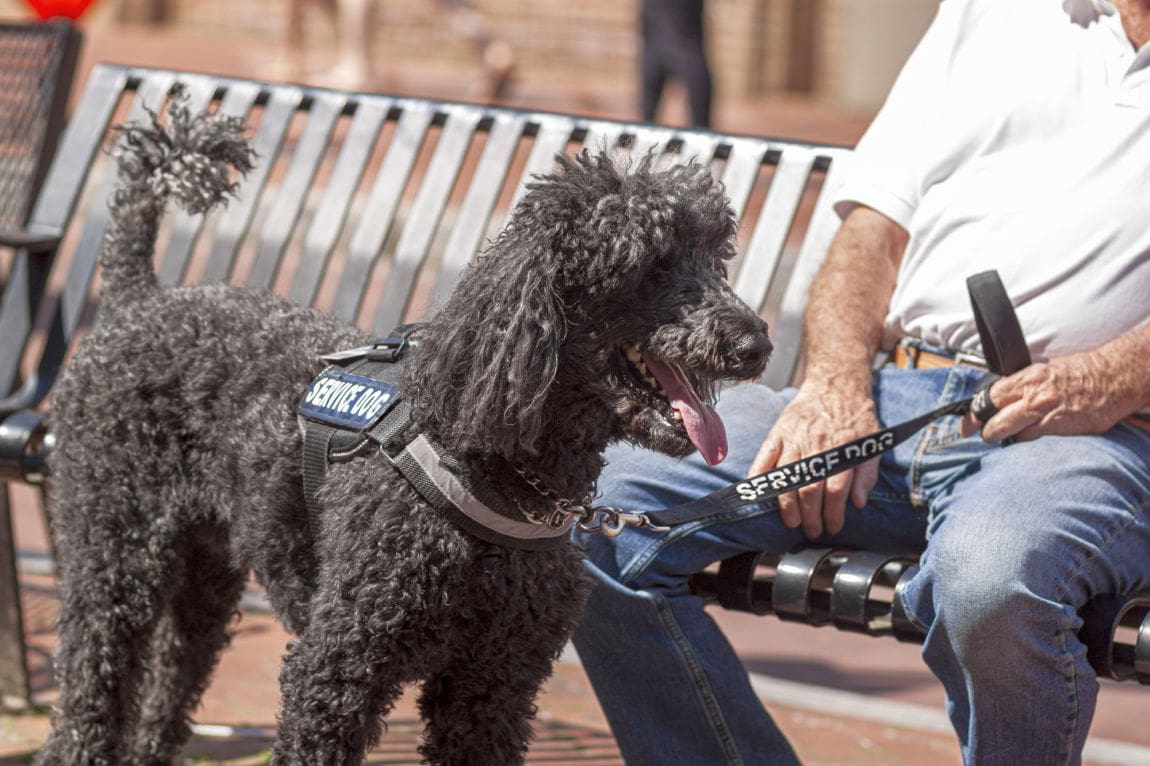



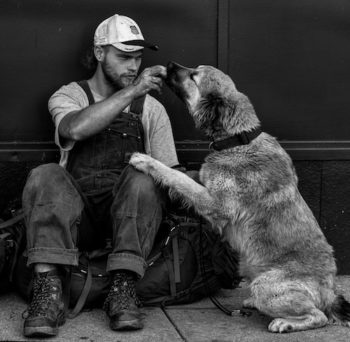

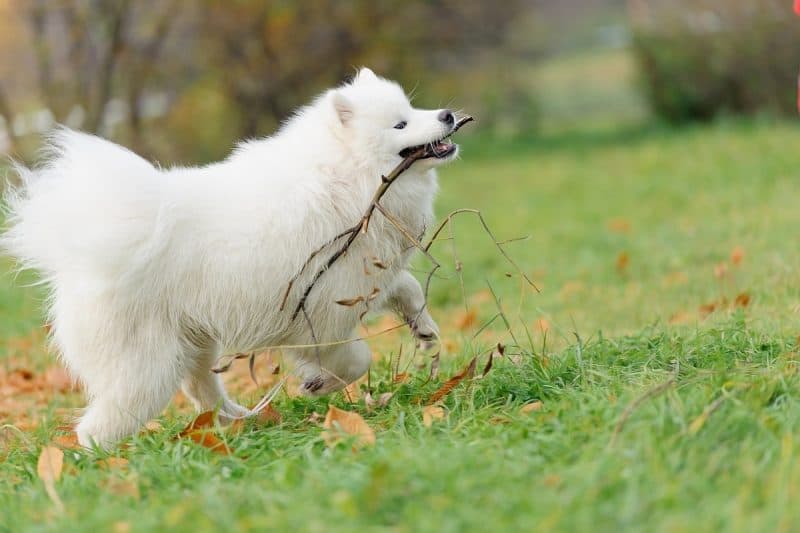

Leave a Comment